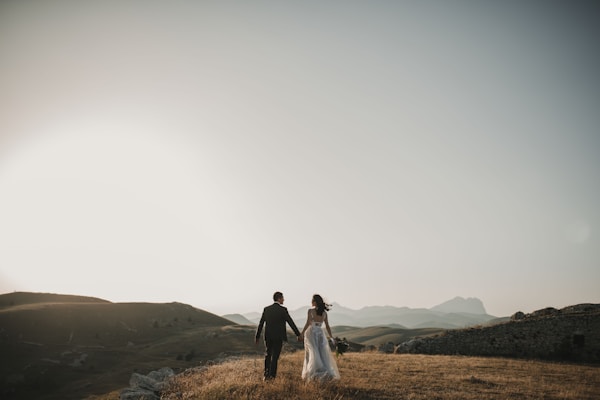How to Design a Wedding Dress That Flattens Different Body Shapes: A Comprehensive Guide
Understanding Body Shapes in Wedding Dress Design
Designing a wedding dress that flatters different body shapes is an art that combines aesthetic appeal with a keen understanding of fashion principles. From the moment an individual becomes engaged, the quest to find the perfect wedding dress begins. Each body type has unique features that can be accentuated or downplayed, and it’s essential to keep these in mind throughout the design process. In this article, we will explore how to create Wedding dresses that not only cater to various body shapes but also enhance the bride's natural beauty.
Identifying Different Body Shapes
Before diving into the specifics of wedding dress design, it’s crucial to identify the common body shapes that many brides possess. The most prevalent body shapes include:
| Body Shape | Description |
| A-Line | This shape is characterized by a fitted bodice that flares out from the waist, resembling the letter 'A'. It compliments most body types. |
| Hourglass | Defined by a well-balanced bust and hips with a narrow waist, this shape is often considered the ideal body type. |
| Pear | With a smaller upper body and larger hips, dresses that add volume to the shoulders can help balance this shape. |
| Apple | This shape features a less-defined waist with fuller hips and bust. Empire waist dresses work wonders here. |
| Rectangle | Lacking defined curves, this body shape can benefit from dresses that create the illusion of a curvier silhouette. |
Design Principles for Flattering Wedding dresses
Once you’ve identified the brides' body shapes, the next step is to develop design principles that enhance their features. Here are some key strategies for creating flattering Wedding dresses:
1. Choosing the Right Silhouette
The silhouette of a wedding dress is one of the most critical factors in design. Different silhouettes work better for different body types:
- A-Line Dresses: Ideal for all shapes, offering a flowing effect that hides imperfections.
- Ball Gowns: Best for pear and hourglass shapes, providing volume in the skirt and emphasizing the waist.
- Mermaid or Trumpet Styles: Perfect for hourglass figures, as they hug the curves and create a sultry silhouette.
- Sheath Dresses: Suitable for rectangular shapes, accentuating long lines and offering a simple and elegant look.
- Empire Waist: Excellent for apple shapes, drawing attention to the bust while flowing over the belly.
2. Selecting the Right Fabrics
Fabrics play a significant role in the overall look and feel of a wedding dress. The following materials can enhance different body types:
- Lightweight Fabrics: Chiffon and organza that flow elegantly are great for A-line dresses.
- Structured Fabrics: Taffeta and satin can be utilized in ball gowns and mermaid styles to hold their shape.
- Stretch Fabrics: Jersey and spandex blend dresses are perfect for creating fitted styles that hug the body.
3. Incorporating Color and Patterns
Color and patterns can also make or break a wedding dress design. Darker colors can create a slimming effect, while lighter colors draw attention to specific areas:
- Dark Colors: Navy, black, and deep burgundy are elegant and create a flattering silhouette.
- Lighter Colors: Pastels and whites are traditional but can sometimes highlight areas that the bride would prefer to downplay.
- Patterned Fabrics: Vertical lines can elongate the body while horizontal lines may widen, so choose wisely!
Accessories that Complement the Dress Design
The right accessories can enhance the overall appearance of the wedding dress. Here are some suggestions based on body shapes:
- Jewelry: For the hourglass figure, statement necklaces can emphasize the neckline, while longer earrings can elongate the face.
- Belts: Belts can enhance the waistline, especially for apple and rectangle shapes.
- Veils: The style of the veil can add height to the silhouette, which is ideal for shorter brides with apple or pear shapes.
Popular Wedding Dress Trends in 2023
The fashion industry is always evolving, and keeping up with current trends is crucial for any designer. Here are some popular wedding dress trends for 2023:
- Mix and Match: Combining fabrics and styles for a unique look.
- Bold Necklines: From deep V-necks to asymmetrical designs, bold necklines have become popular.
- minimalist Styles: Simple and chic dresses that emphasize clean lines and understated elegance.
Important Considerations for Bride's Consultation
When consulting with a bride about designing her wedding dress, consider the following:
- Understand her personal style preference and comfort level.
- Discuss her wedding location and theme to tailor the dress to the setting.
- Set a realistic budget that accommodates her expectations and your design capabilities.

Conclusion
In summary, successfully designing a wedding dress that flatters different body shapes requires a deep understanding of both aesthetic qualities and individual preferences. By identifying body types, choosing the right silhouettes and fabrics, and incorporating accessories, designers can create stunning Wedding dresses that make every bride feel beautiful on her special day. Remember, it’s not just about following trends but about enhancing the bride's natural beauty and making her feel confident. As you embark on this creative journey, keep these principles in mind to ensure your designs resonate with a diverse audience.